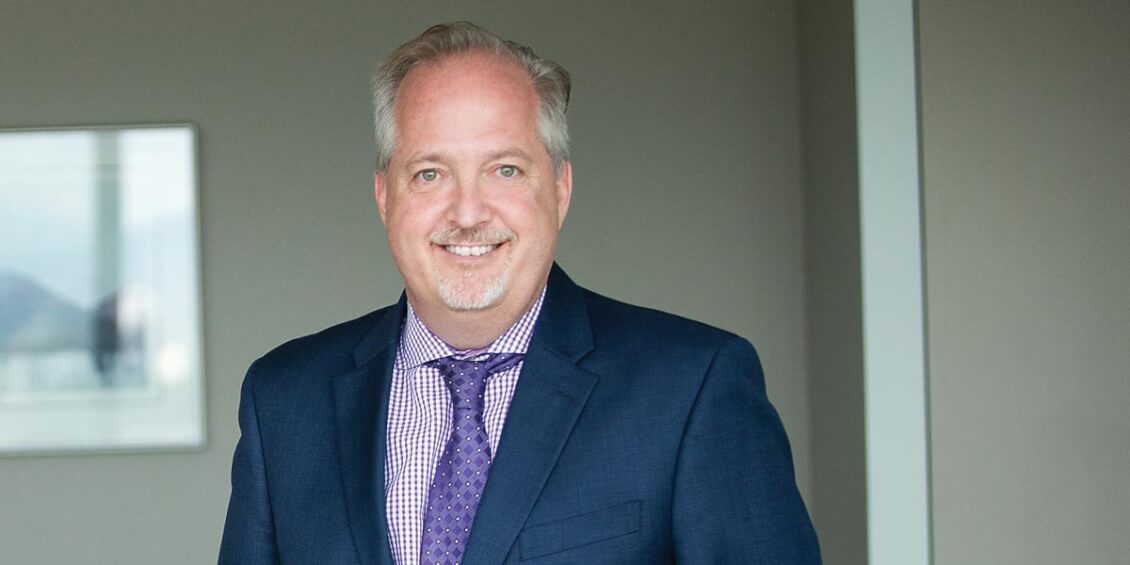
As managing director of a 65-person wealth management firm, Clay Gillespie, CFP, CIM, starts each all-staff meeting by telling employees everything he can about business operations — from technology to finances.
“I hate people not knowing what’s going on or feeling left out,” said the 17-year MDRT member from Vancouver, British Columbia, Canada. “The more information you give, the more loyal they are to you and they understand the decisions. As soon as you give them the whole picture, you get good ideas.”
Gillespie brings this desire for information sharing and engagement to his leadership roles with the 2019 Top of the Table Division. Gillespie will serve as both Global Council Member and Strategic Planning Committee Chair.
The right fit
Gillespie started in financial services in 1992, after graduating with a degree in finance. He quickly realized he wasn’t ready to give advice and counsel people, so he focused on finding a job where he could work on the administrative side of financial services while earning his designations.
His first job was with Rogers Group Financial, which recently changed its name to RGF Integrated Wealth Management, where he remains today. “I went through the articling program, which is a training program we still have,” Gillespie said. “We don’t believe someone just out of university is ready to be a full-fledged advisor.”
During the three-year articling program, advisors earn designations and meet other goals. “We want to make sure they’re able to give the level of advice we expect at our firm,” he said.
Gillespie takes time to find advisors who are the right fit for the company, putting each potential employee through five hours of psychological testing and two hours with the company’s psychologist.
“We spend forever on articling and succession planning, so we want to make sure that at the end of the day, we have a good fit,” he said.
Ongoing succession planning
Part of the reason for the focus on the right fit, outside of the obvious desire to have employees who successfully integrate into the business, is the continual succession planning that’s part of RGF’s philosophy.
“When we moved into a new building two years ago, we decided we never wanted to join a mother ship. We wanted to remain independent,” Gillespie said. “We’re into our second generation of succession planning, moving on to our third. We’re always looking for the next generation.”
During their tenure at the company, employees are given the right to buy shares of stock. The shareholders vote on the board of directors yearly, and the board appoints the managing director. The company is advisor-led.
“At other companies, there’s a long way between management and advisors, where advisors are only relevant based on sales,” Gillespie said. “We believe that’s the wrong way to run a firm. This is advisor-led and advisor-owned.”
To keep the ownership of the company in the hands of those most actively involved, employees are required to begin selling shares back when they turn 60, relinquishing all stocks by the time they turn 70.
“This allows us to keep ownership with the next generation,” Gillespie said. “We want to protect the firm’s longevity.”
Gillespie also reinforces the company’s tenet of client first. “When we moved, we made every office the same size. A junior advisor has the same size office as me,” he said. “Because it’s not about the advisor, it’s about the client. It’s about driving into everybody that we’ll be successful if we focus on the client outcome.”
One great idea
When Gillespie was on an MDRT committee, he was asked to submit a sales idea to share. He had one idea for managing his practice that provided instant relief from some challenging situations.
“Find your five worst clients and fire them. Those clients who, when you pick up the phone and hear them, your lifeblood is sucked out by having to talk to them,” he said. “Disengage with people when they’re no longer a fit with you. You want to spend time and effort with clients who want your advice.”
The first time Gillespie fired a client was after a difficult meeting. “I felt like I had been run over by a truck afterward,” he said. So Gillespie decided to cut ties. “The first time I did it, I hadn’t felt that good in forever.”
Gillespie offers some specifics on how to actually let a client go. If possible, wait until the market is up and begin with a letter. “I tell them that I believe we’re having a difficult time working together, and give examples,” he said. “I give recommendations for a new advisor and offer to introduce them.
“We usually have a phone call after they get the letter and they often feel the same way I do, I’d just done it first.”

